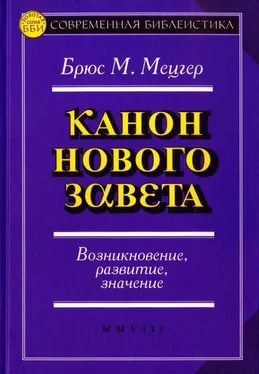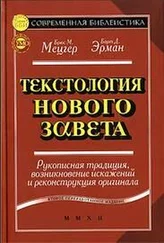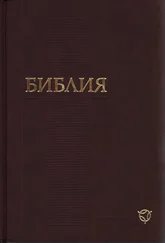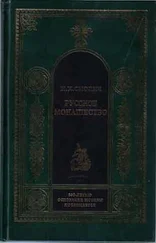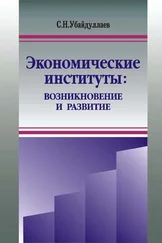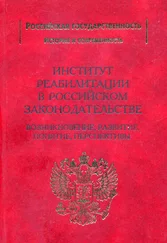Обсуждение взаимодействия исторического и богословского критерия см. в Siegfrid Pedrsen, «Die Kanonfrage als historishces und theologisches Problem», Studia theologica, xxxi (1977), pp. 83–136.
См. Gustave Bardy, «L'Inspiration des Pиres de Г Йglise», Mйlanges Jules Lebreton, ii; Recherches de science religieuse\ xl (1951–1952), pp. 7–26; Everett R. Kalin, «Argument from Inspiration in the Canonization of the New Testament», Th.D. diss., Harvard University, 1967 (summary, Harvard Theological Review, lx [1967], p. 491); его же, «The Inspired Community: A Glance at Canon History », Concordia Theological Monthly, xlii (1971), pp. 541–549; Albert C. Sundberg, Jr., «The Bible Canon and the Christian Doctrine of Inspiration», Interpretation, xxix (1975), pp. 352–371; Enriques Nardoni, «Origen's Concept of Biblical Inspiration», Second Century, iv (1984), pp. 9–23.
Вселенская Церковь никогда не определяла, что такое вдохновенность Св. Писания, поскольку ее скорее можно усмотреть, нежели определить.
А. В. Du Toit, «The Canon of the New Testament», Guide to the New Testament, i (Pretoria, 1979), p. 88.
An Introduction to Reformed Dogmatics (London, 1949; перепечатано в Grand Rapids, 1981), p. 318.
Adolf Harnack, Das Neue Testament um das Jahr 200 (Freiburg i. Br., 1889); History of Dogma, ii, pp. 38–66; и The Origin of the New Testament and the Most Important Consequences of the New Creation (New York, 1925). Острую критику последней книги см. H. С. Vedder в Union Seminary Review (Richmond), xxxviii (1926–1927), pp. 146–158.
E.J. Goodspeed, New Solutions of the New Testament Problems (Chicago, 1927), и «The Editio Princeps of Paul », Journal of Biblical Literature, lxiv (1945), pp. 193–204.
A. E. Barnett, Paul Becomes a Literature Influence (Chicago, 1941).
C. Leslie Mitton, The Formation of the Pauline Corpus of Letters (London, 1955).
John Knox, Philemon among the Letters of Paul (New York, 1935; 2nd ed., 1959). Критику мнения Нокса (The Interprter's Bible, ix [1954], pp. 357 и далее) о том, что собранные вместе Послания Павла были впервые опубликованы в форме двух папирусных свитков, см. в С. H. Buck, «The Early Order of the Pauline Corpus», Journal of Biblical Literature, lxviii (1949), pp. 351–357, и Jack Finegan, «The Original Form of the Pauline Collection», Harvard Theological Review, xlix (1956), pp. 85–103.
E.J. Goodspeed, The Meaning of Ephesians (Chicago, 1933).
Hans Windisch, «Der Apokalyptiker Johannes als Begründer des neutestamentlichen Kanons», Zeitschrift fur die neutestamentliche Wissenschaft, x (1909), pp. 148–174.
Johannes Leipoldt, Geschichte des neutestamentlichen Kanons, i (Leipzig, 1907; переизд. 1974), p. 33.
Аргументы Робинсона (А. Т. Robinson) в пользу более ранней датировки Апокалипсиса (Redating the New Testament [Philadelphia, 1976], pp. 221–253), по общему мнению, оказались неубедительны.
Теория о двух источниках Матфея и Луки до сих пор считается обоснованной, хотя аргументы в ее пользу mutatis mutandis все еще выдержаны в терминах так называемой гипотезы Грисбаха (Griesbach).
См. D. W. Riddle, «Early Christian Hospitality: A Factor in the Gospel Transmission», Journal of Biblical Literature, lvii (1938), pp. 141–154.
Все сохранившиеся рукописи Посланий Павла относятся к тому времени, когда их уже объединили; другими словами, мы не располагаем экземпляром изолированного Послания Павла, который был бы составлен до того, как их собрали вместе. У нас есть только изданные собрания или фрагменты таких собраний. Согласно Цунцу, из Отцов Церкви только Климент Римский «мог, похоже, пользоваться текстом, предшествовавшим (или по крайней мере независимым) появлению корпуса Павловых посланий» (Gьnther Zuntz, The Text of the Epistles; A Disquisition upon the Corpus Paulinum [London, 1953], p. 217).
«On the Composition and Earliest Collection of the Major Epistles of Paul», Paul and the Gnostics (New York, 1972), pp. 239–274. Шмитхальс на основании беглого, поверхностного и неубедительного анализа пытается показать, что 1–е и 2–е Послания к Коринфянам представляют собой результат соединения шести писем Павла в Коринф, 1–е и 2–е Послания к Фессалоникийцам получились из четырех писем, а к Филиппийцам охватывает три письма. Проницательную критику его взглядов см. у Гэмбла (Gamble), «The Redaction of the Pauline Letters and the Formation of the Pauline Corpus», Journal of Biblical Literature, xciv (1975), pp. 403–418.
«Das Wieterwirken des Paulus und die Pflege seines Erbes durch die Paulus–Schule», New Testament Studies, xxi (1975), pp. 505–518.
«Die Entstehung des Corpus Paulinum», Neutestamentliche Entwürfe (Munich, 1979), pp. 302–350.
Op. cit., pp. 302 и 309.
Op. cit., pp. 310 и далее.
Op. cit., p. 234.
Op. cit., p. 335.
Cp. A. Lindemann, Paulus im ältesten Christentum. Das Bild des Apostels und die Rezeption der paulinischen Theologie in der frühchristlichen Literatur bis Marcion (Tubingen, 1978); K. Aland, «Methodische Bemerkungen zum Corpus Paulinum bei den Kirchenvtern des zweiten Jahrhunderts», Kerygma und Logos… Festschrift Carl Andersen (Göttingen, 1979), pp. 2948; D. K. Rensberger, «As the Apostle Teaches; The Development of the Use of Paul's Letters in Second Century Christianity», Ph.D. diss., Yale University, 1981.
Подзаголовок: Index des citations et allusions bibliques dans la littйrature patristique (Paris, 1975).
Читать дальше
